Abstract
Thirty-six Minitek (BBL Microbiology Systems, Cockeysville, Md.) tests were evaluated with 625 Kansai Medical University stock strains of 22 species and one group of nonfermentative gram-negative rods able to grow on ordinary peptone media. Among the 36 tests, 15 were selected because a clear-cut reaction was shown by all 625 Kansai Medical University strains. Of these 15 tests, 12 were further selected for routine use because they were regarded as useful for the identification of nonfermenters. The 12 tests were arranged into the following four groups: (i) lysine-arginine-ornithine, (ii) urea-ortho-nitrophenyl-beta-D-galactopyranoside-dextrose aerobic, (iii) maltose-xylose-starch, and (iv) esculin-nitrate reduction-indole. A new profile system for four digits, the Minitek Y-Y (Yabuuchi and Yamanaka) system, consisting of 64 numbers which represent each single species and 11 numbers which give two to four species, is herein proposed. The system was designed primarily for a less expensive identification of gram-negative rods already confirmed in a butt of either triple sugar iron or Kligler iron agar for their lack of ability to ferment dextrose. Among the 539 clinical isolates obtained from 3 hospitals, 511 strains identifiable by classical methods were also identified by the Minitek Y-Y system.
Full text
PDF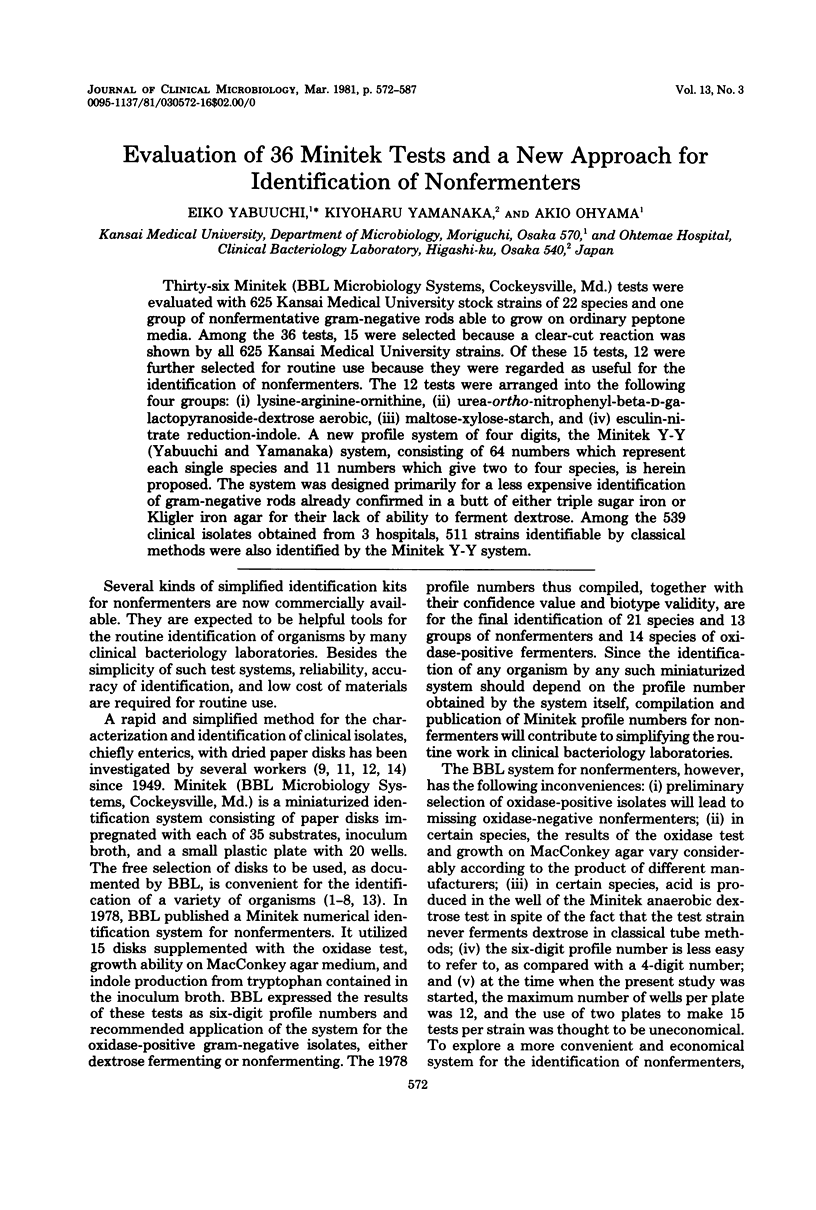
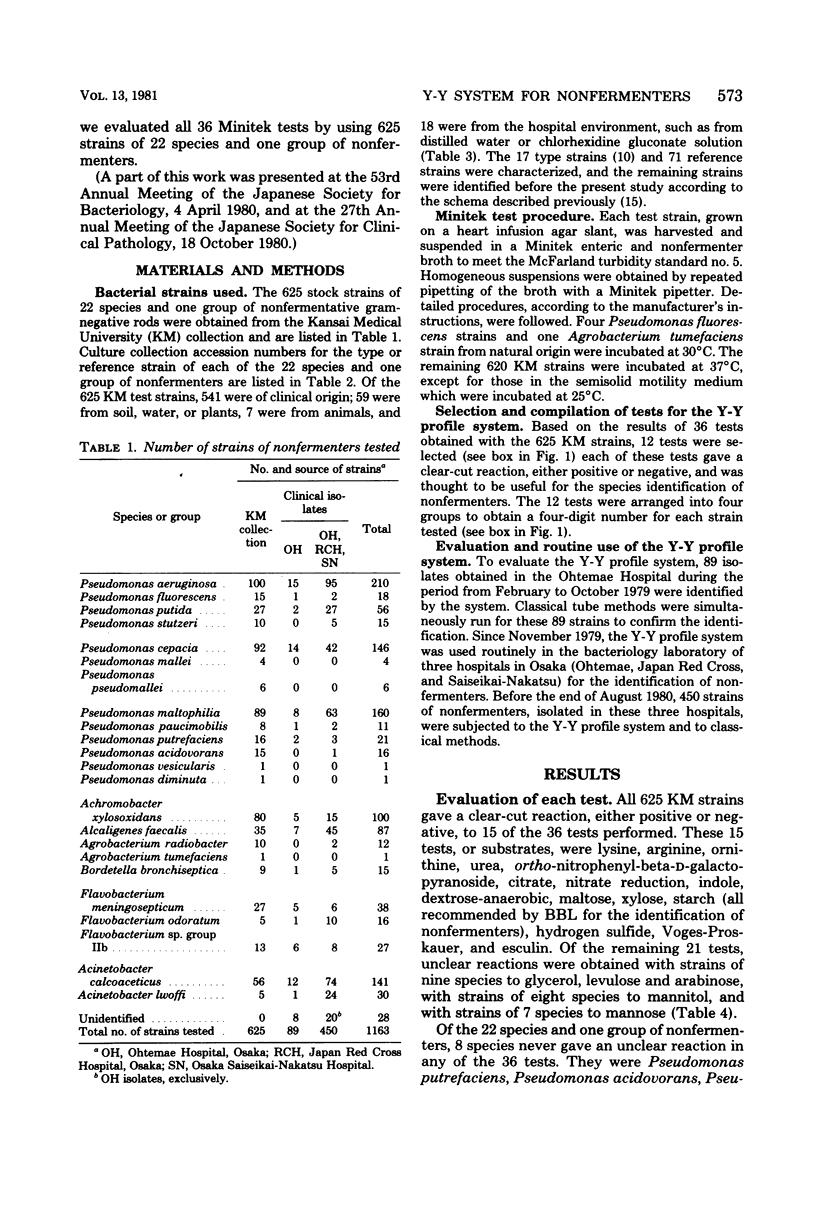
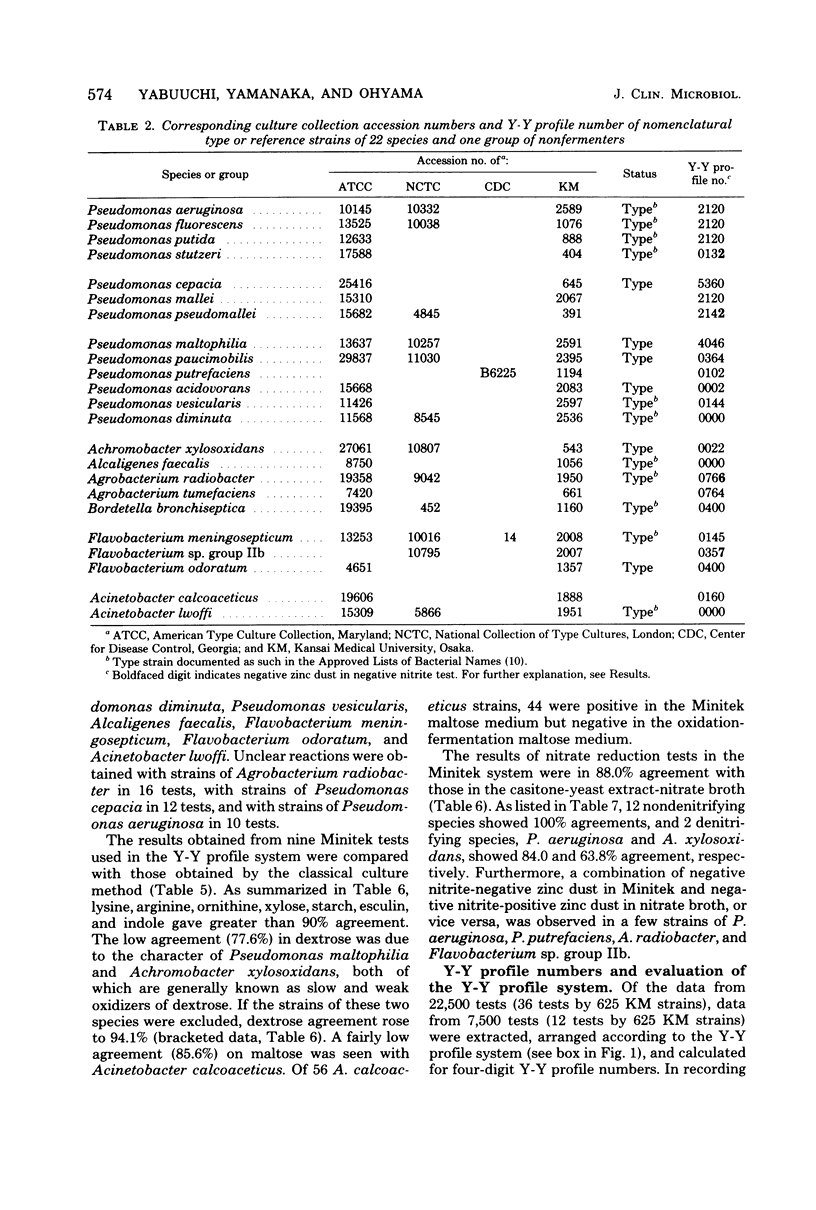
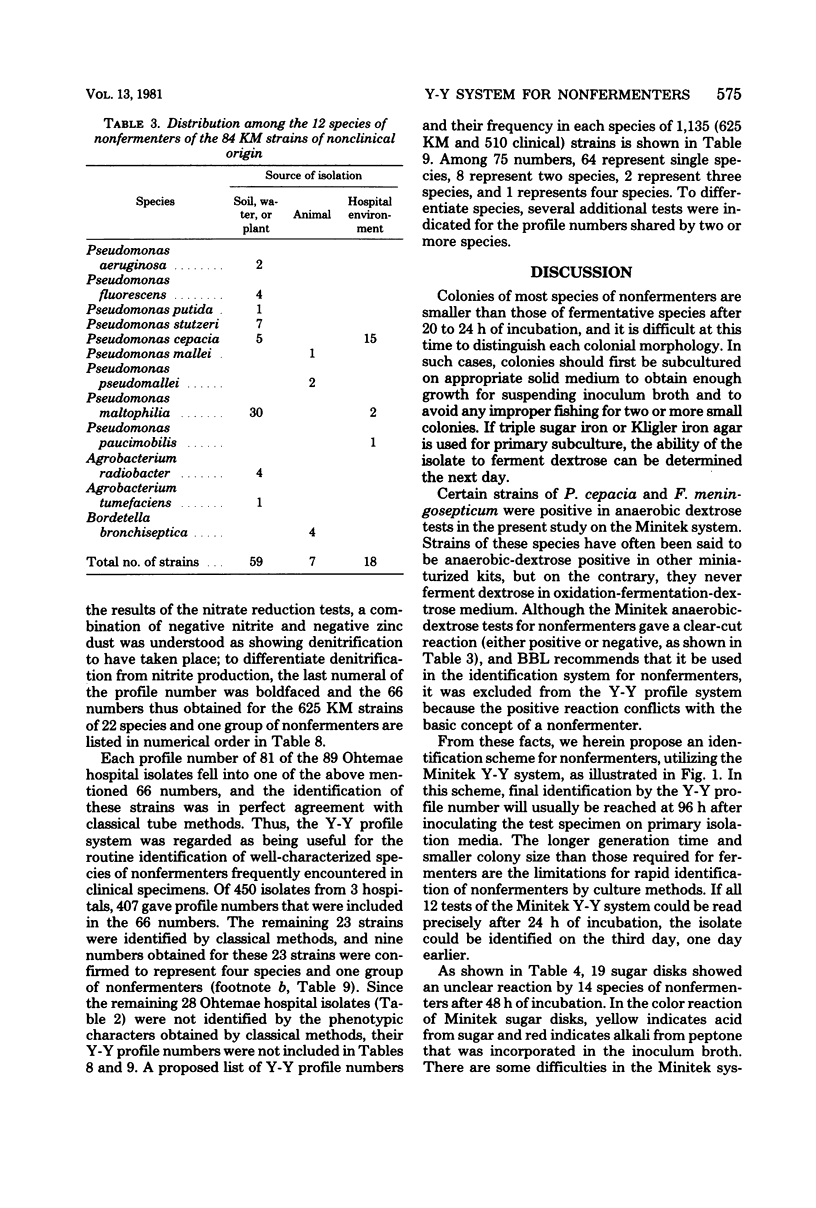

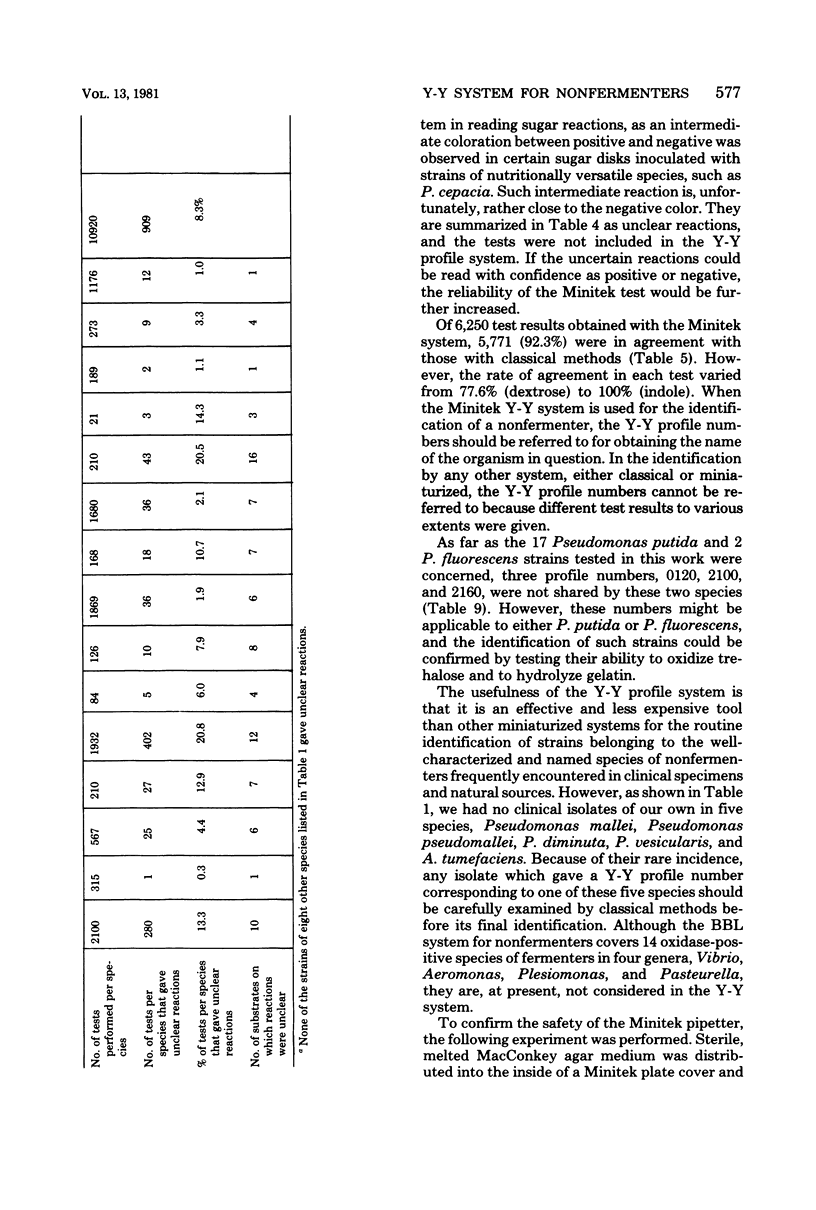

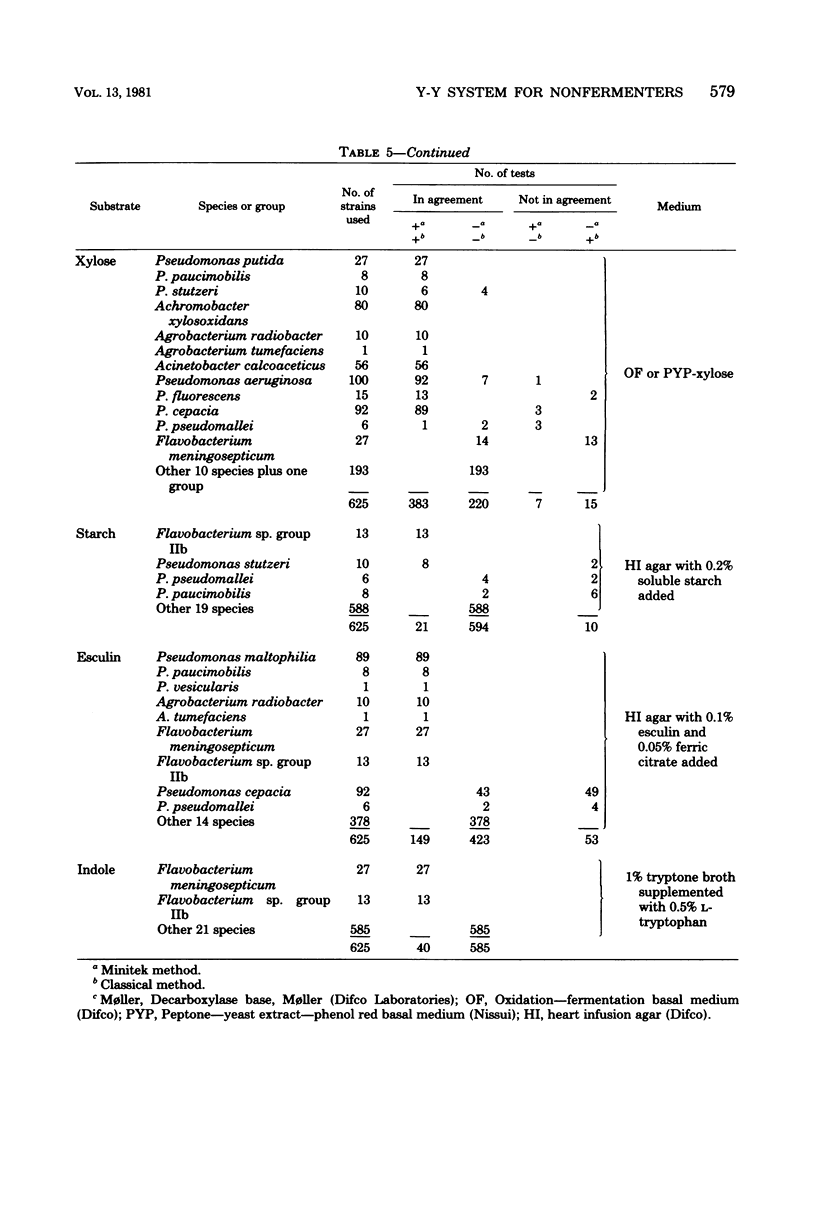
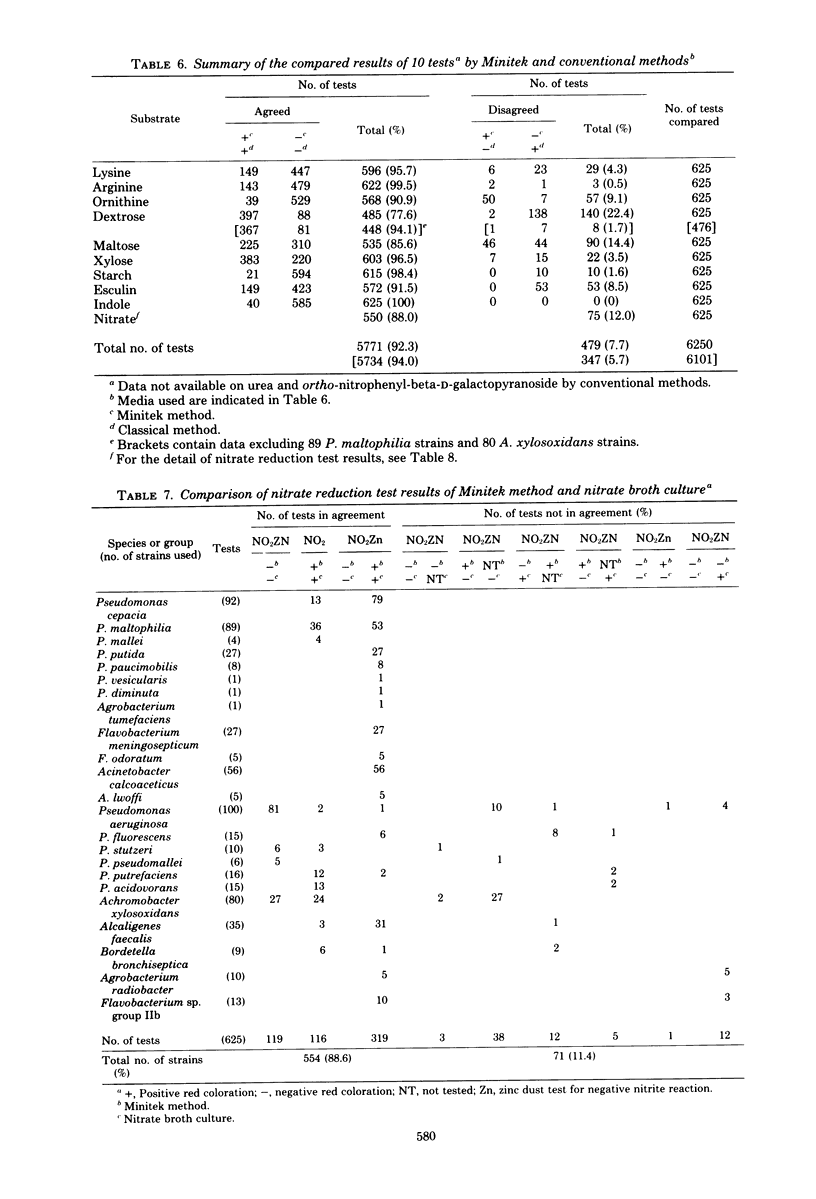
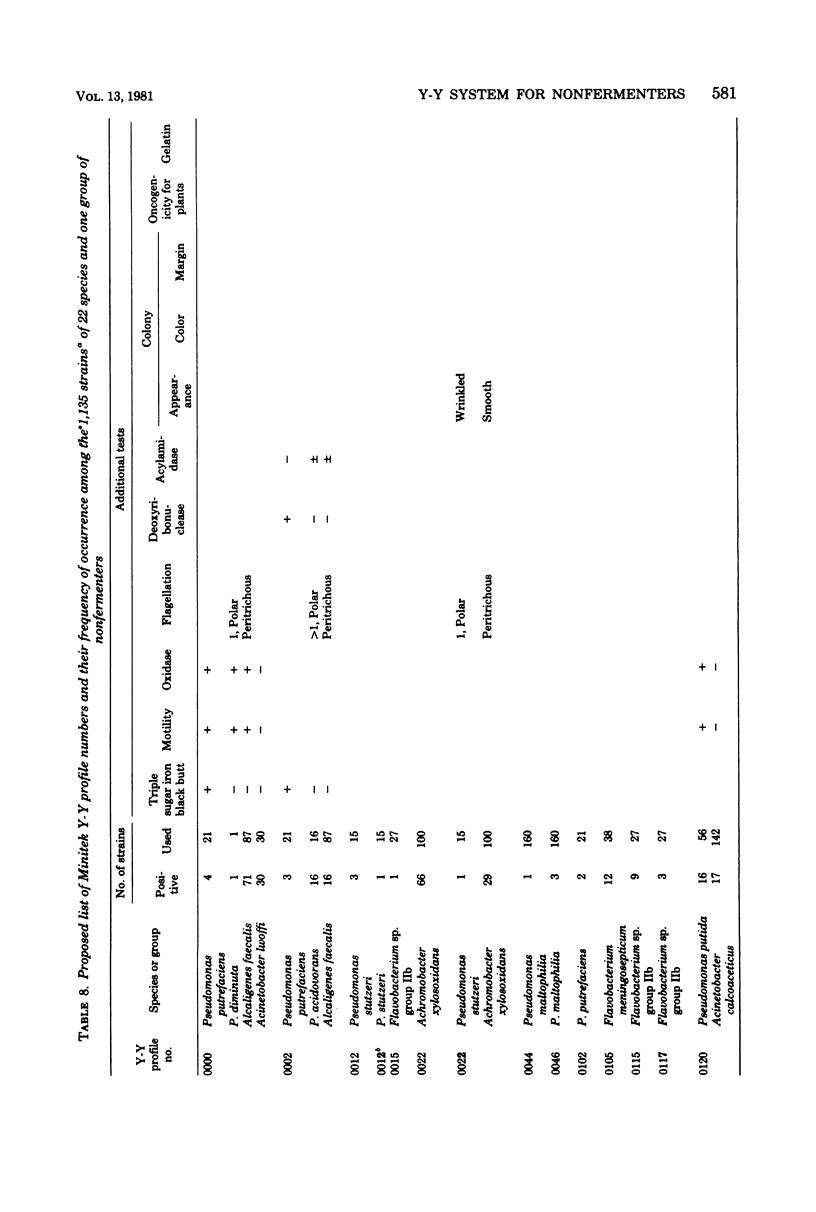
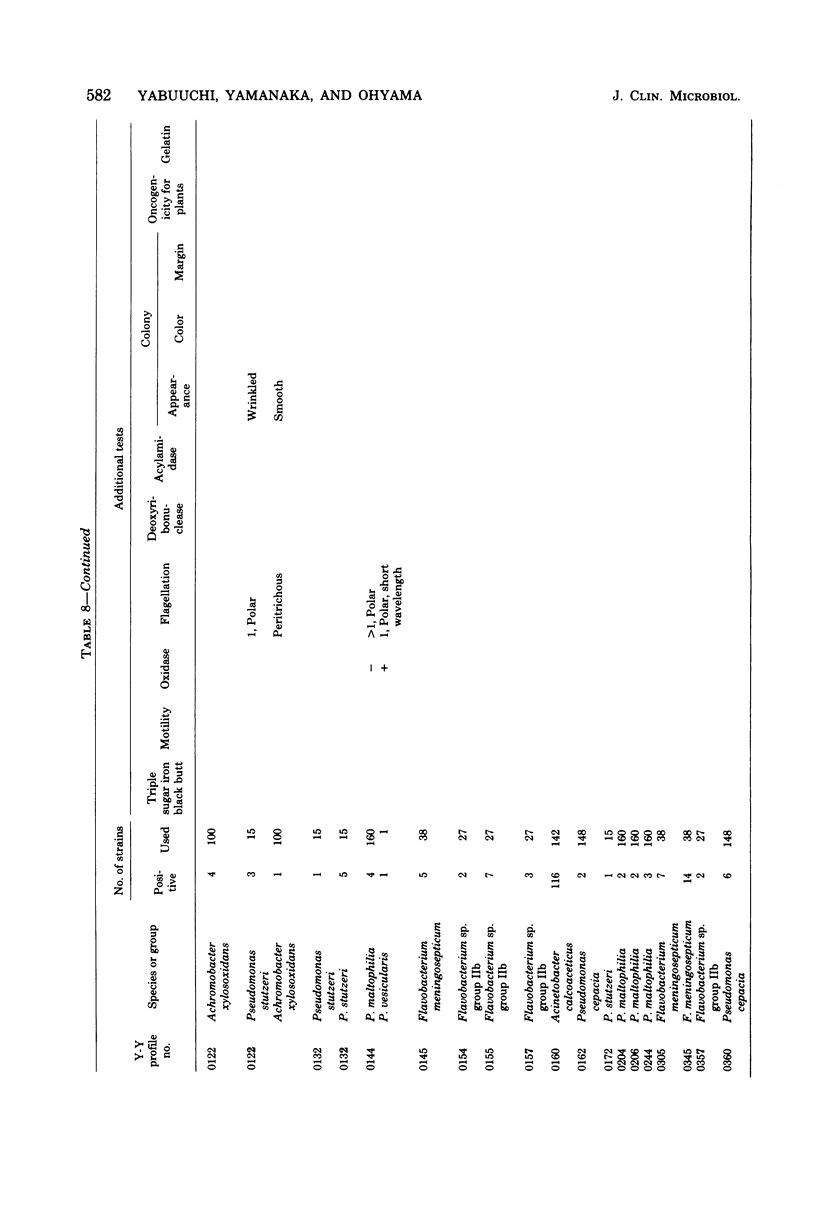
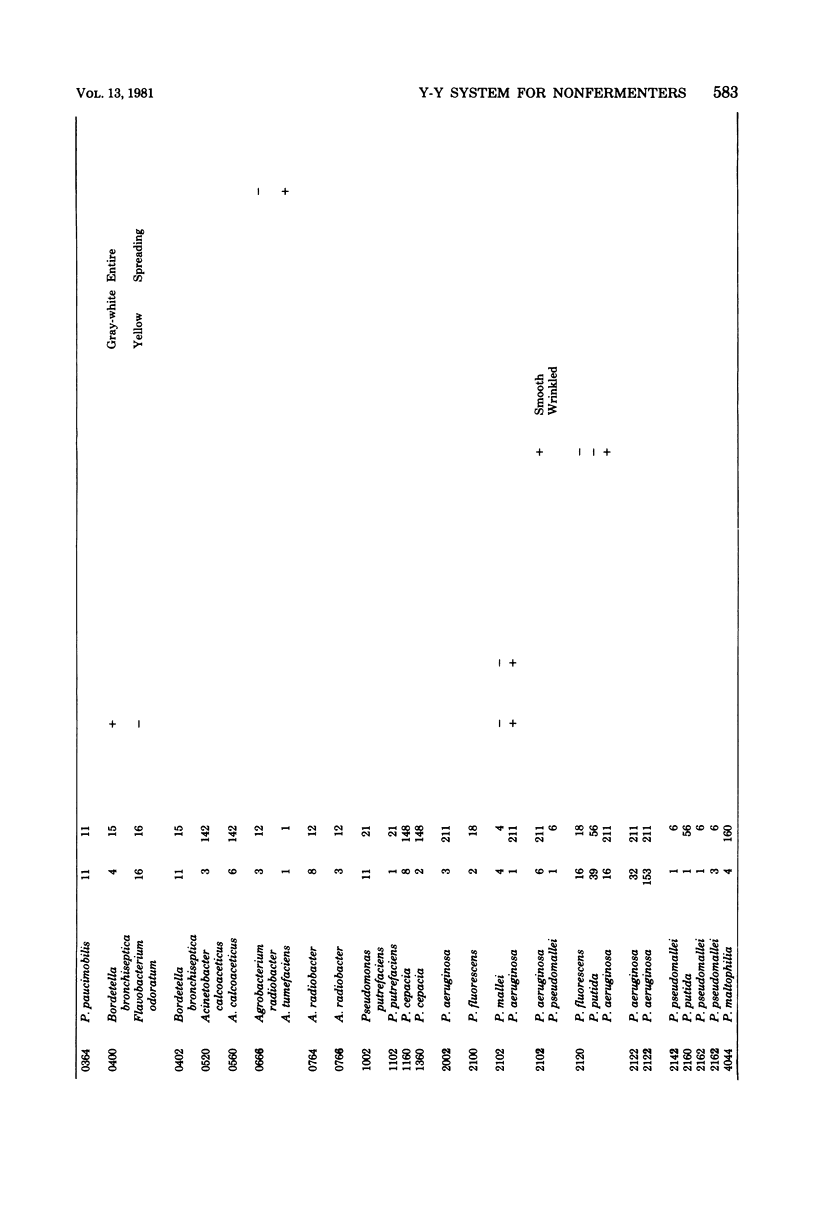
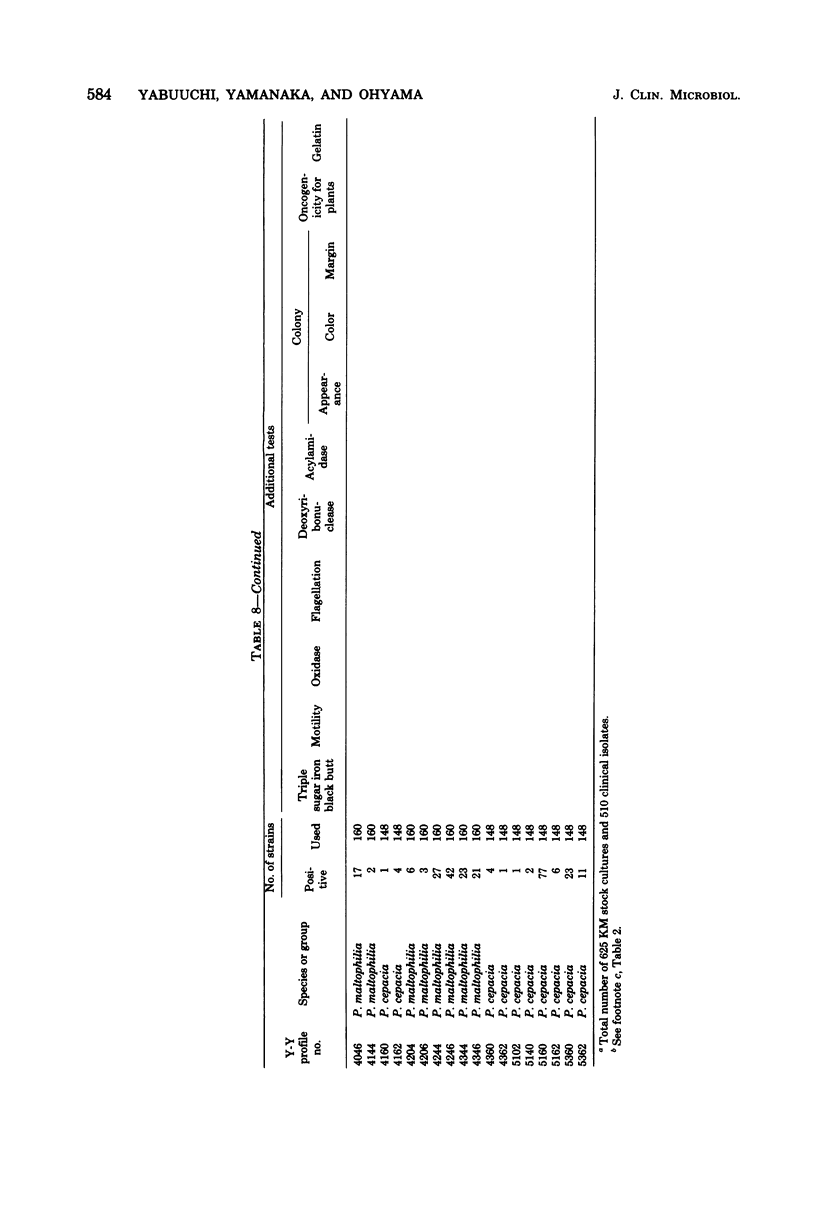
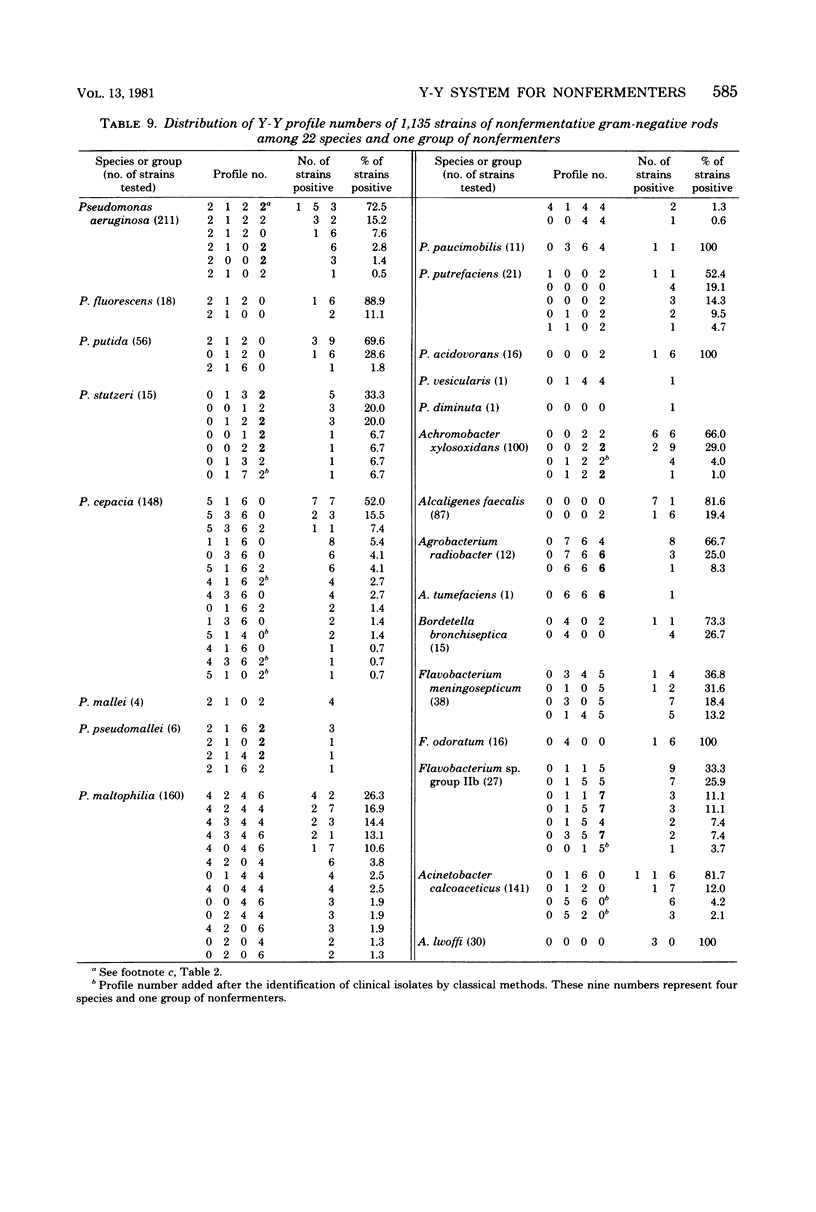
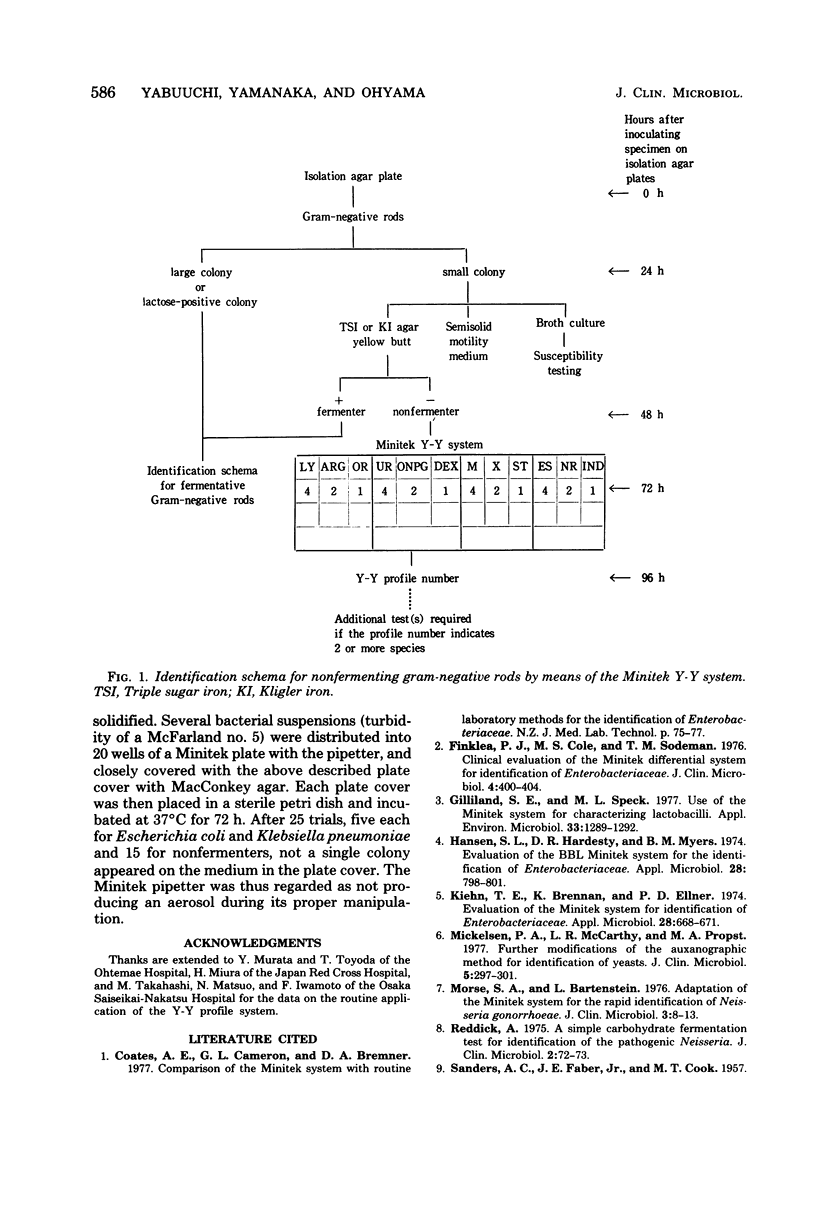
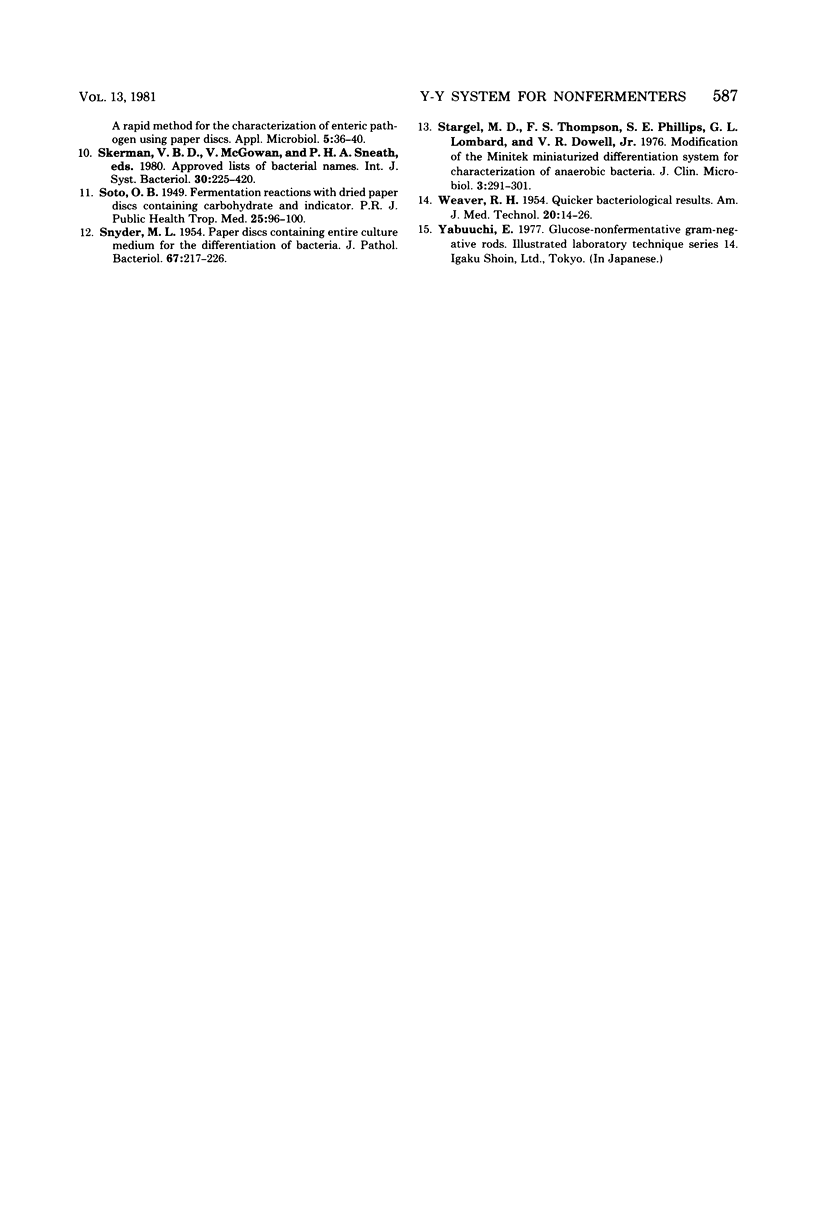
Selected References
These references are in PubMed. This may not be the complete list of references from this article.
- Finklea P. J., Cole M. S., Sodeman T. M. Clinical evaluation of the minitek differential system for identification of Enterobacteriaceae. J Clin Microbiol. 1976 Nov;4(5):400–404. doi: 10.1128/jcm.4.5.400-404.1976. [DOI] [PMC free article] [PubMed] [Google Scholar]
- Gilliland S. E., Speck M. L. Use of the Minitek system for characterizing lactobacilli. Appl Environ Microbiol. 1977 Jun;33(6):1289–1292. doi: 10.1128/aem.33.6.1289-1292.1977. [DOI] [PMC free article] [PubMed] [Google Scholar]
- Hansen S. L., Hardesty D. R., Myers B. M. Evaluation of the BBL Minitek system for the identification of Enterobacteriaceae. Appl Microbiol. 1974 Nov;28(5):798–801. doi: 10.1128/am.28.5.798-801.1974. [DOI] [PMC free article] [PubMed] [Google Scholar]
- Kiehn T. E., Brennan K., Ellner P. D. Evaluation of the Minitek system for identification of Enterobacteriaceae. Appl Microbiol. 1974 Oct;28(4):668–671. doi: 10.1128/am.28.4.668-671.1974. [DOI] [PMC free article] [PubMed] [Google Scholar]
- Mickelsen P. A., McCarthy L. R., Propst M. A. Further modifications of the auxanographic method for identification of yeasts. J Clin Microbiol. 1977 Mar;5(3):297–301. doi: 10.1128/jcm.5.3.297-301.1977. [DOI] [PMC free article] [PubMed] [Google Scholar]
- Morse S. A., Bartenstein L. Adaptation of the Minitek system for the rapid identification of Neisseria gonorrhoeae. J Clin Microbiol. 1976 Jan;3(1):8–13. doi: 10.1128/jcm.3.1.8-13.1976. [DOI] [PMC free article] [PubMed] [Google Scholar]
- Reddick A. A simple carbohydrate fermentation test for identification of the pathogenic Neisseria. J Clin Microbiol. 1975 Jul;2(1):72–73. doi: 10.1128/jcm.2.1.72-73.1975. [DOI] [PMC free article] [PubMed] [Google Scholar]
- SNYDER M. L. Paper discs containing entire culture medium for the differentiation of bacteria. J Pathol Bacteriol. 1954 Jan;67(1):217–226. doi: 10.1002/path.1700670126. [DOI] [PubMed] [Google Scholar]
- Stargel D., Thompson F. S., Phillips S. E., Lombard G. L., Dowell V. R., Jr Modification of the Minitek Miniaturized Differentiation System for characterization of anaerobic bacteria. J Clin Microbiol. 1976 Mar;3(3):291–301. doi: 10.1128/jcm.3.3.291-301.1976. [DOI] [PMC free article] [PubMed] [Google Scholar]
- WEAVER R. H. Quicker bacteriological results. Am J Med Technol. 1954 Jan-Feb;20(1):14–26. [PubMed] [Google Scholar]


